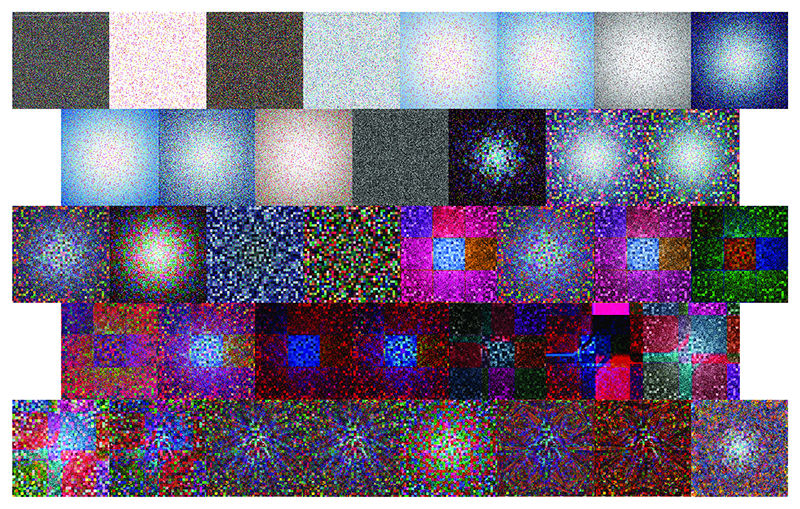CARSON GRUBAUGH
CARSON GRUBAUGH
Thomas Wolf
Thomas Wolf is a native Californian who has been an artist for 21 years. Leaving a scenographer's life in New York in the early 90's he moved to Seattle where, regarding the first public showing of his art in 1994 The Stranger wrote, " . . . the show is a must-see. Nowhere else are you going to experience the wonder, play and reticence of the cutting edge of cyberart." Wolf founded the projectorheads light-show which headlined at the ReBar and provided highly charged visuals in Seattle music and art venues. From Hood River, Oregon his website "pointsource" won an award for creative design, and in Portland he had solo shows at The Omni gallery and the Yellow Bird Gallery, also participating in group shows at the Mark Wooley Gallery. His art hung at the Rexall Rose for the first six of Art on Alberta, the forerunner to the highly regarded Portland Open Studios project. A painting of his is in the collection of the Hallie Brown Ford Museum of Art, and his painting "dada minefield" was used as a cover for the environmental Art magazine, "ORLO". Since moving to the San Francisco Bay Area in 1999, his work has been shown in diverse venues such as Google's headquarters, One Embarcadero Center, Hotel d'Art and the Blue Cube. His work was accepted to the Propaganda 1.0 and 2.0 shows in Los Angeles and into the fourth publication of "Bagazine" by the X-Ray Book Company. He continuously seeks to innovate as an artist and to gain wider acceptance for digital fine art and the importance of persistence, discipline and process in the act of painting.
Statement:
Simplexity A process for Creation
In the Autism of language, Simplexity is a purely combinatorial abstract structure.
“Any map or language, to be of maximum usefulness, should in structure, be similar to the structure of the empirical world.”
Alfred Korzybski
Simplexity is a process of emergent computation. The revelatory diffeomorphism of the combinatorial perceptual aspect of the ground in its evolution across time mirrors the organic and the trans-organic of the phenomenal world. Final appearance cannot be inferred from the utilized forms, although all such forms are specified, its final appearance emerges from the combinatorial optimization of the elementary forms. My engagement in the process is the mediation between the micro and the macro, through the modeling of observable structures (perceptual participation,) and the logic conceptualization of this model.
A family of marks evolves over time according to the factors of preconception, human variation, and adaptive criterion:
Preconception refers both to the intellectual processes that result in genesis of the work and to the computational and visual model with which I begin. Although these are structures that are not strictly logical; there is a kind of butterfly logic at work whereby conception becomes continuous; a part of the process.
Human variation is the necessary error in replication and reiteration that introduces points of interest in the field. These continuously emerging elements, such as perceived shapes and waveforms in incessant fluctuation through perceptual effects like optical color mixing, feed experimental data back into the computational and visual model affecting future Conception.
Adaptive Criterion is the constant observation and integration across time of evolving elements such as color, tone, and frequency of field. Such continuous response to the developing ground sometimes opens new avenues to investigation; at times overriding the computational and visual model and thereby either partially or fully restructuring the Concept.
A kind of spin-foam on canvas, a Simplexity painting possesses a substantial temporal potential, which makes possible a much deeper level of engagement on the part of the observer than less developed abstractions provide. The object (the painting itself) is a record of my experience in the universal domain, the visible legerdemain around the act of going to the well of our collective unconscious for a draught of the unifying truths of existence. As such, each painting contains the code relevant for such deep connectedness.
“A science of a phenomenal domain had first to empirically find the simplest regularities of this domain and define its geometrical framework based on these primitives. Then this science becomes all the geometrical structures constructed within this framework which are empirically confirmed.”
Alfred Korzybski


